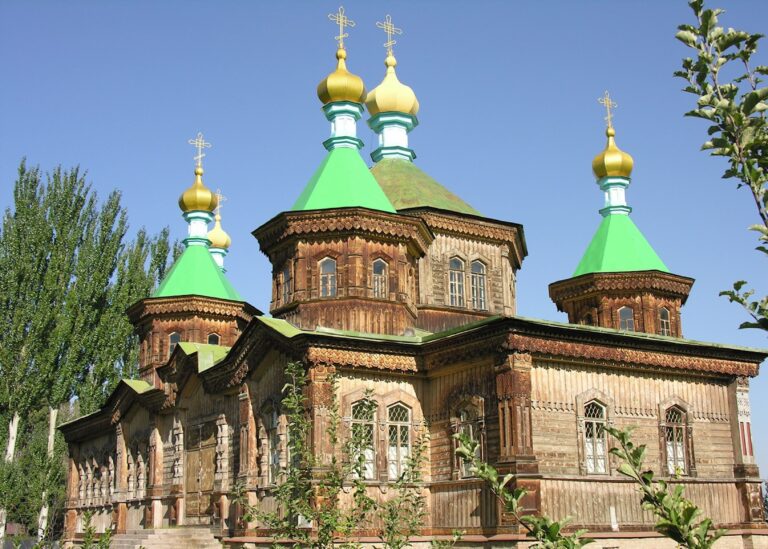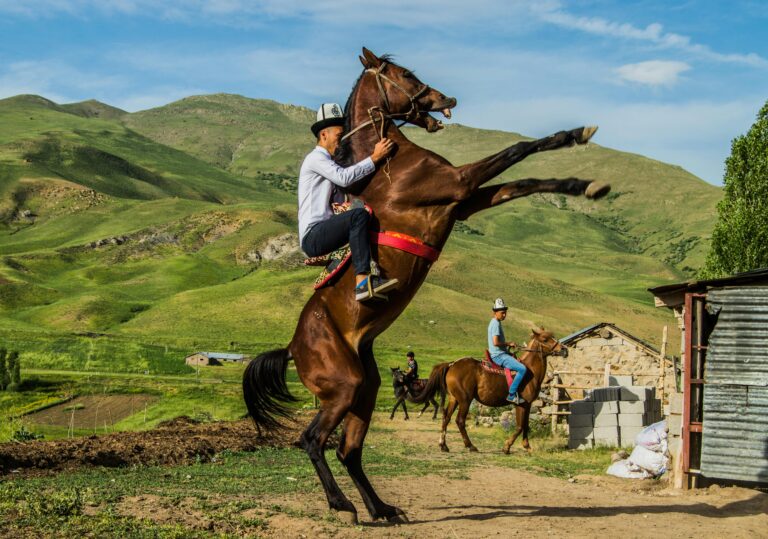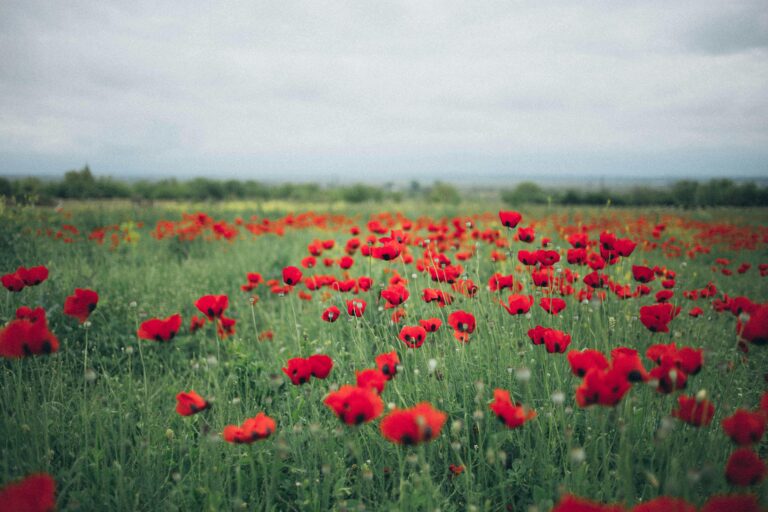Kyrgyzstan, a country rich in nomadic heritage, has a vibrant tradition of clothing that reflects its history, climate, and lifestyle. Kyrgyz traditional clothes are not only practical but also carry deep cultural symbolism, representing the identity and values of the Kyrgyz people. Traditional clothing has been influenced by centuries of nomadic existence, shaped by the need for comfort, durability, and adaptation to the mountainous terrain.
Table of Contents
ToggleKyrgyzstan Traditional Dress: An Overview
Kyrgyz national clothes are designed to withstand the harsh mountain climate while showcasing the craftsmanship of local artisans. The attire varies based on gender, age, and occasion, with distinct elements for men and women.
Men’s Kyrgyz National Clothes
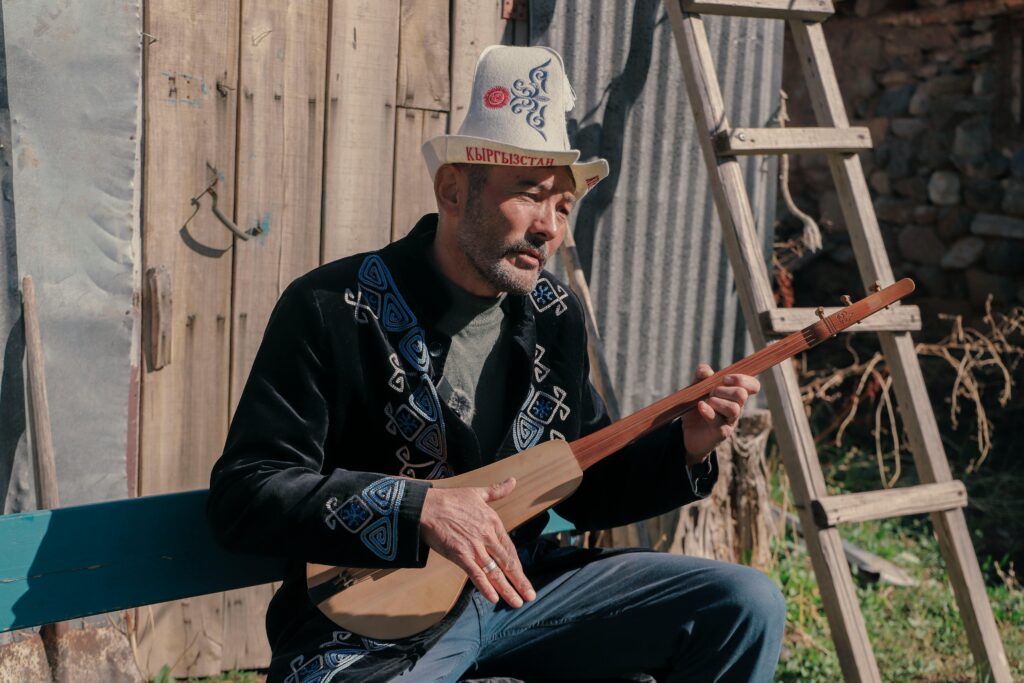
Kalpak – A traditional felt hat, symbolizing wisdom and honor. It is considered sacred, and there are even customs regarding its handling and storage.
Chapan – A long embroidered coat, worn over everyday clothing. It provides warmth and is often passed down through generations.
Beldemchi – A woolen belt tied around the waist for warmth and support, often made from handwoven textiles.
Ichik – A fur coat, often made from wolf or fox fur, worn in cold weather, signifying wealth and status.
Koynak – A simple tunic-like shirt that serves as an everyday garment.
Shalbar – Loose-fitting trousers made from durable wool or cotton, perfect for horseback riding.
Women’s Kyrgyz National Clothes

Elechek – A traditional headdress made of long fabric wrapped around the head, symbolizing marital status and social rank.
Koinok – A long embroidered dress, often decorated with intricate patterns and symbols representing nature and prosperity.
Chapan – A similar coat to men’s but with more elaborate designs and colors, worn on festive occasions.
Tebetey – A fur hat, commonly worn by women in winter, providing warmth while adding elegance.
Jooluk – A headscarf worn by married women, reflecting modesty and cultural values.
Beldemchi – A decorative apron worn over dresses, signifying femininity and tradition.
The Significance of Kyrgyz National Clothes

Kyrgyzstan’s national costume is more than just clothing; it embodies the country’s history, values, and identity. Every pattern and design has a meaning, often inspired by nature, animals, and tribal symbols. The kalpak, for example, is not just a hat but a representation of national pride and wisdom. It is believed that a person’s life and luck are connected to their kalpak, which is why it is treated with the utmost respect.
The elechek, traditionally worn by married women, signifies status and motherhood. The long white fabric wrapped around the head can sometimes reach up to 30 meters, with older women wearing larger and more elaborate elecheks to indicate experience and respectability.
The materials used in Kyrgyz clothing are also deeply tied to nature. Felt, wool, and leather are sourced from sheep and other livestock, while natural dyes from plants and minerals are used to create the vibrant colors found in traditional garments.
Kyrgyzstan National Costume in Modern Times

While modern fashion has influenced daily wear, traditional Kyrgyz clothes remain essential for special occasions such as weddings, festivals, and national holidays. Many people still wear the kalpak with pride, and artisans continue to create handcrafted garments using age-old techniques. In recent years, there has been a resurgence of interest in traditional attire, with young designers incorporating elements of Kyrgyz national clothes into contemporary fashion. Fashion shows and cultural events now feature these garments, celebrating the country’s rich heritage.
During national festivals like Nowruz and Independence Day, people of all ages don Kyrgyzstan’s national costume to honor their ancestors and showcase their cultural identity. Many local designers are working to preserve and modernize these garments, ensuring that the legacy of Kyrgyz traditional clothing lives on for future generations.
Final Thoughts
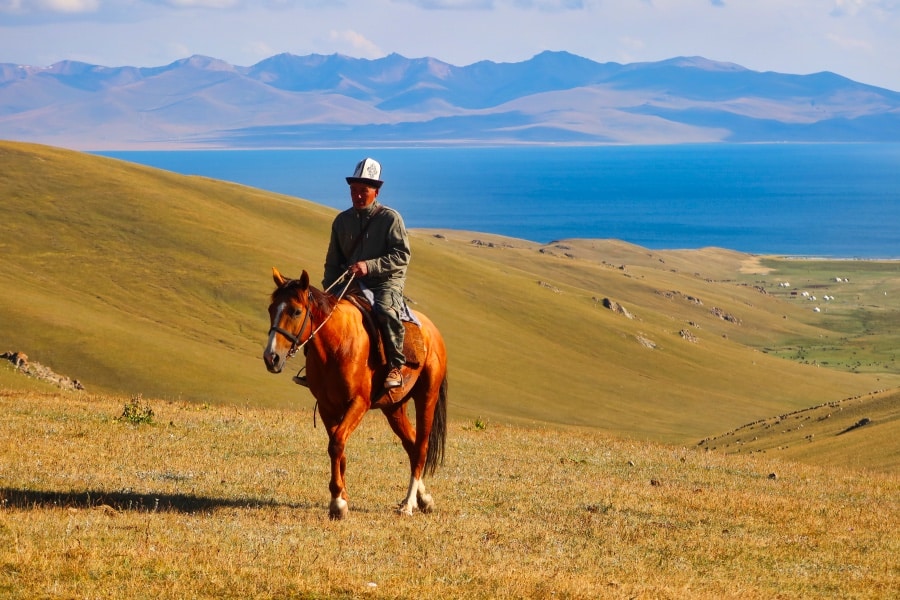
Kyrgyz traditional clothes are a testament to the country’s rich nomadic culture and artistic heritage. Whether worn daily or on special occasions, they reflect the resilience, craftsmanship, and pride of the Kyrgyz people. If you ever visit Kyrgyzstan, don’t miss the chance to see or even wear these beautiful garments!
The preservation and revival of Kyrgyzstan’s national costume continue to inspire new generations, ensuring that these stunning garments remain an essential part of the country’s identity.


